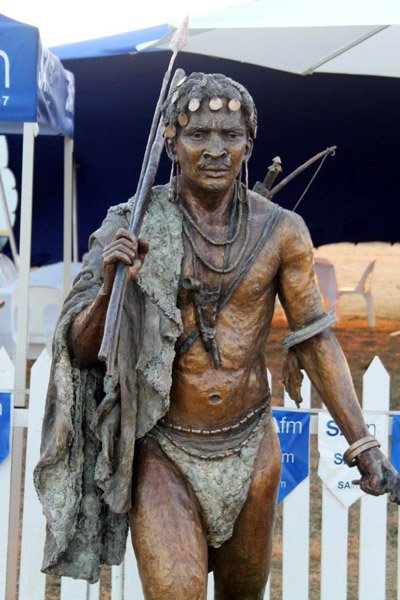This article covers the period from 1652 to 1663 in the Cape of Good Hope.
Nommoa, who belonged to the Goringhaiqua tribe, was Khoikhoi resistance leader against the Dutch settlement in the Cape of Good Hope.
Autshumato, the Khoikhoi translator train by the English, assisted Jan van Riebeeck when he landed in the Cape of Good Hope on 6 April 1652.
To improve the settlements ability to communicate with the local Khoikhoi tribes, Van Riebeeck decided to train another translator.
From the ranks of the Goringhaiqua Khoikhoi tribe, Nommoa was selected for the training in Batavia.

In 1657 Nommoa arrived in Jakarta, Batavia to start his education which evolved in more than just the Dutch language and customers.
He first-hand observed how the Dutch dealt with the indigenous tribes to get control over the necessary resources. He was also acquiring knowledge of firearms and how it was used.
Nommoa became convinced that he would be killed and not return to the Cape. He changed his strategy to make a positive impression on the Dutch. First, he adopted a western name Anthony to illustrate his faithfulness to the Dutch. Second, he promoted his image a preacher-like man with leadership style.
So convincing was he, that the Dutch tended to call him “Dominee” (Reverend) from where the nickname Doman under which he became known.
With these qualities of faithfulness to the Dutch and leadership abilities, Nommoa convinced the Dutch to sent him back to the Cape. A year after his arrival in Batavia, he was back in the Cape of Good Hope in 1658.
During Nommoa stay in Batavia, Van Riebeeck received permission from the Dutch East India Company (VOC) to issue farms to the first “Vry Burgers”. In February 1657 the first permits were issued to nine company servants to farm along the Liesbeeck River. The land allocated to these “Vry Burgers” was used by the Khoikhoi for hunting and gathering.
Van Riebeeck denied the Khoikhoi’s claim on the land arguing that there was no written evidence of ownership.
When Nommoa arrived back in the Cape, he started warning his people about the slavery he had seen in Batavia.
He was afraid that the Khoikhoi would become slaves of the Dutch.
It can be assumed that Nommoa was not aware of the fact that the Cape was not regarded as a colony and therefore Van Riebeeck did not have any right to enslaving the indigenous population. Instead, slaves were imported from the east.
Nommoa became not only antagonistic to the Dutch, but also to both his fellow translators, Autshumato and Krotoa, the niece of Autshumato. At one stage Nommoa confronted Krotoa and accused her that she betrayed her people.
The conflict about land ownership and the dispute over cattle escalated and on 19 May 1659 Nommoa executed a raid on the Dutch settlement.
It became the First Khoikhoi-Dutch War with the settlers sought refuge in Van Riebeeck’s fort.
The Dutch erected a series of fortified fences along the Liesbeeck River to be able to defend themselves from another Khoikhoi attack. The barrier restricted the Khoikhoi’s movement, and no new attacks occurred. In 1660 Van Riebeeck also planted a wild almond hedge as protection to the settlement.
Nommoa died in December 1663 in his hut nearby the fort of Van Riebeeck.
Of the three translators or diplomats, Nommoa was a Trojan-horse type character who adopted the guise of a diplomat only to initiate a war when the Dutch was not expecting it.
Sources:
http://www.sahistory.org.za/topic/dutch-east-india-company-deicvoc
http://www.sahistory.org.za/people/doman
https://mediadiversified.org/2016/08/25/slave-narratives-from-dutch-colonisation-in-indonesia/
https://www.geni.com/people/Autshumato-Chief-of-Goringhaicona/6000000015468980004